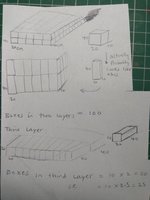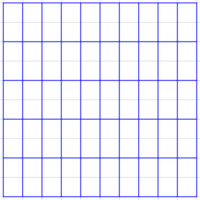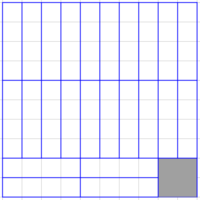bumblebee123
Junior Member
- Joined
- Jan 3, 2018
- Messages
- 200
Can anyone help me- I don't understand why the answer is 124 and not 125
Question: A crate is a cube with side 1 m. A box is a cuboid which is 40cm by 20cm by 10cm. Find the greatest number of boxes which can be packed in the crate.
So the volume of the crate must be 1m^3. And the cuboid volume must be 0.4 m x 0.2 m x 0.1 m = 0.008m^3.
to find out how many boxes fit in the crate I thought it would be: 1 / 0.008 = 125
however the answer is 124- why is this!?
any help would be highly appreciated
Question: A crate is a cube with side 1 m. A box is a cuboid which is 40cm by 20cm by 10cm. Find the greatest number of boxes which can be packed in the crate.
So the volume of the crate must be 1m^3. And the cuboid volume must be 0.4 m x 0.2 m x 0.1 m = 0.008m^3.
to find out how many boxes fit in the crate I thought it would be: 1 / 0.008 = 125
however the answer is 124- why is this!?
any help would be highly appreciated



